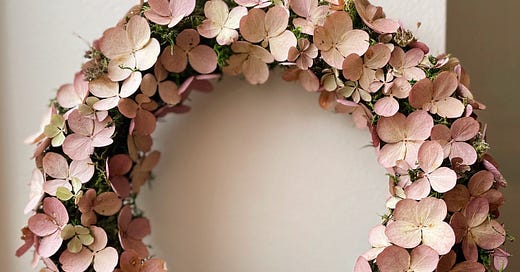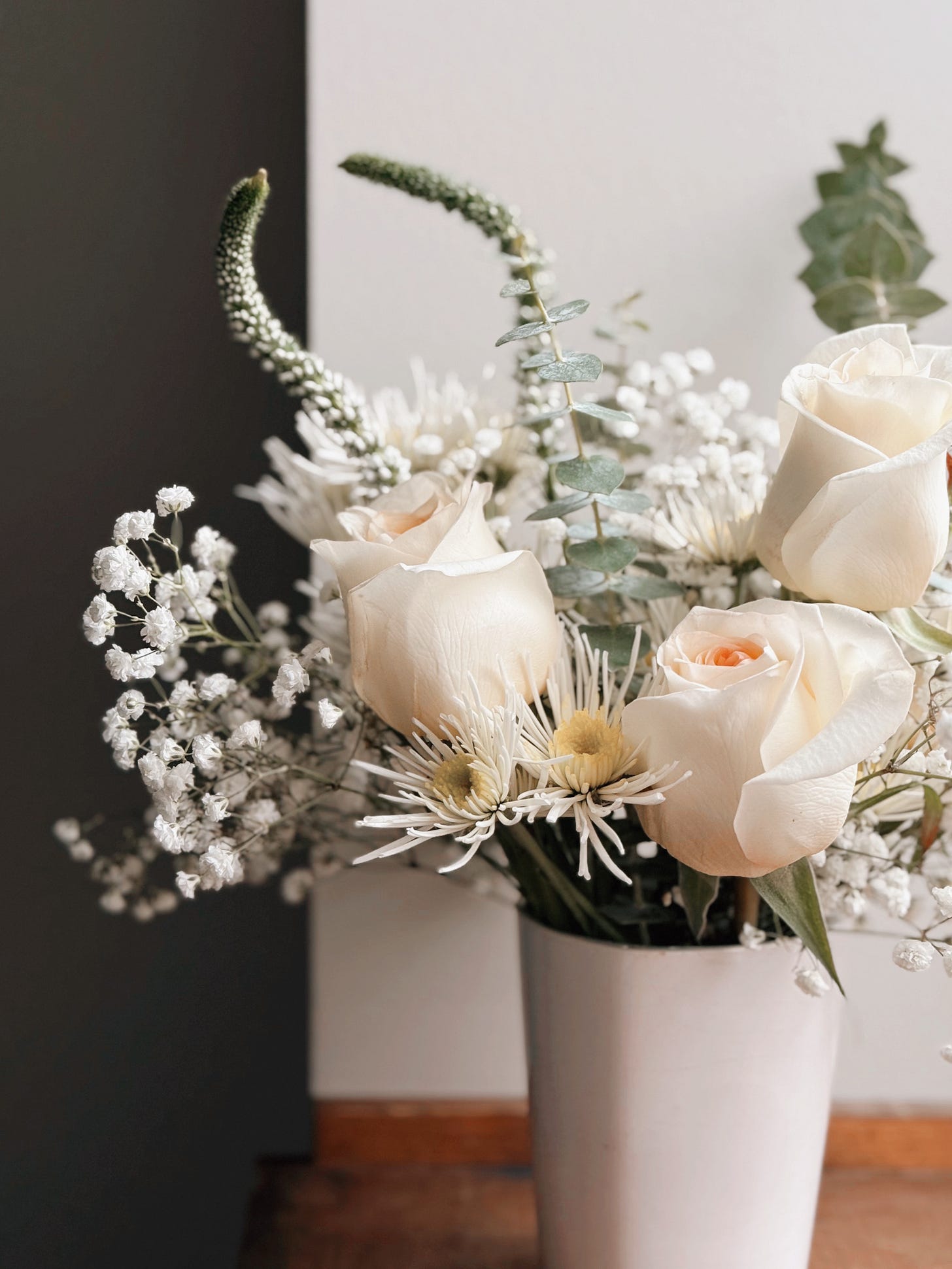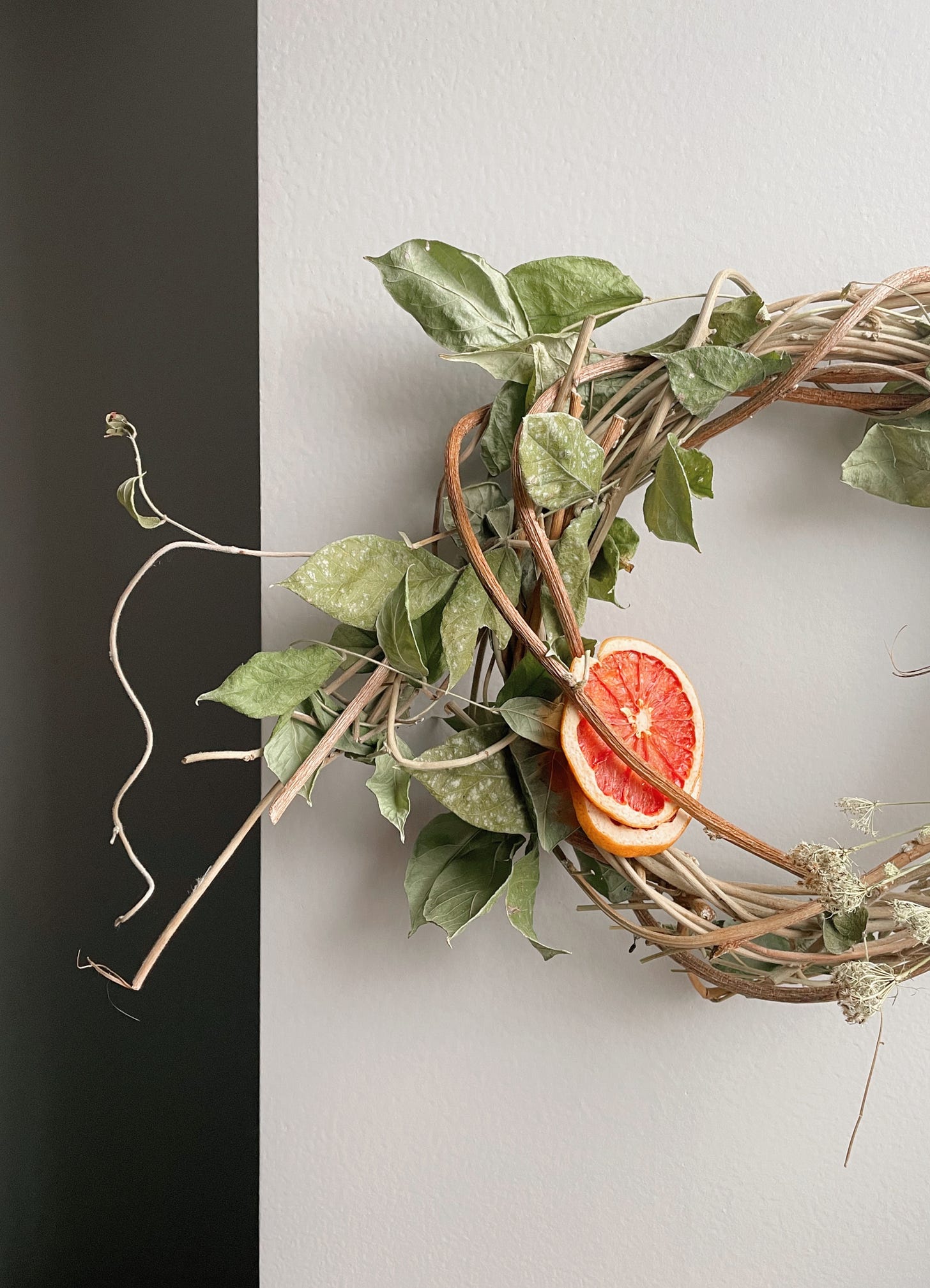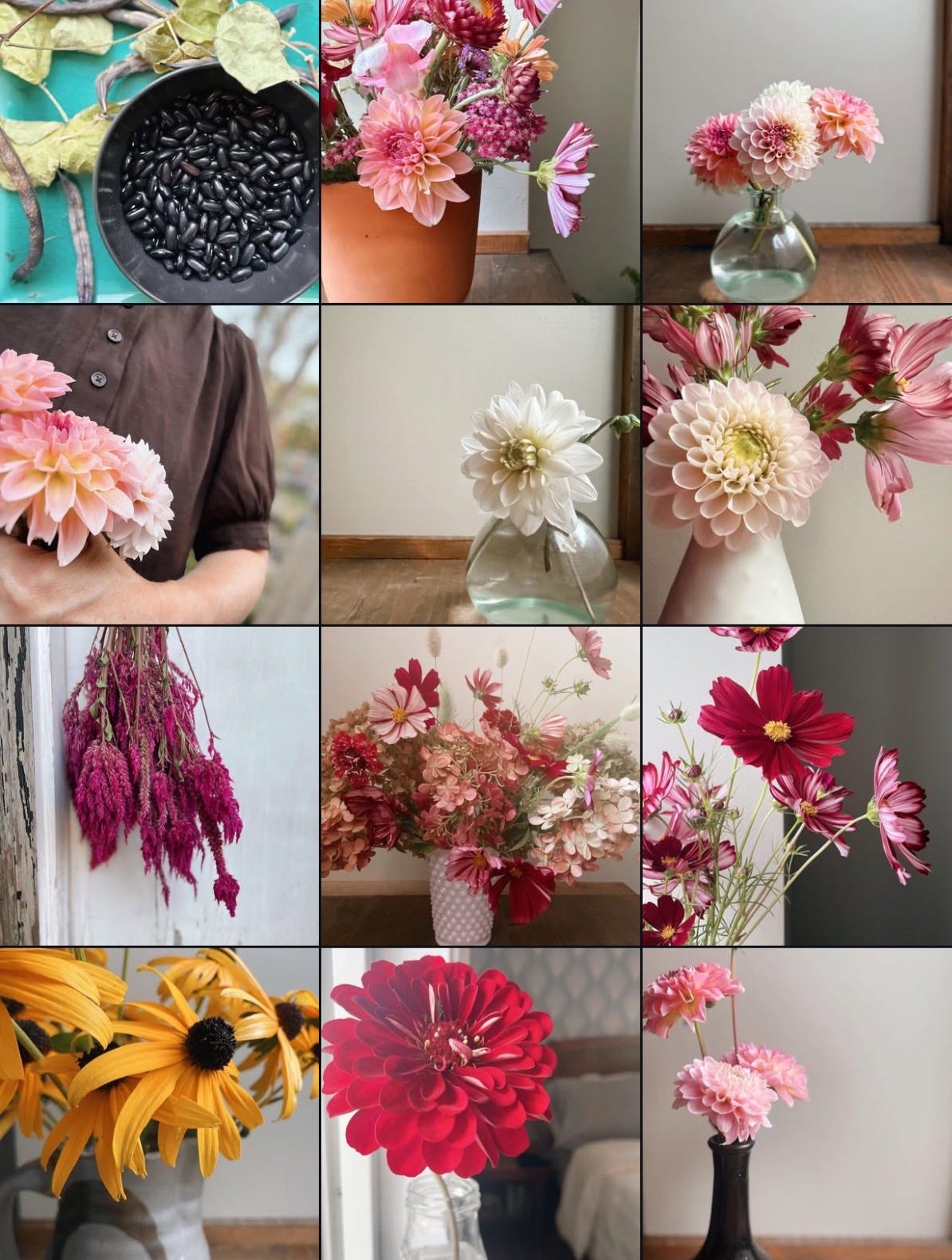A year of flowers, a year of growth. A year of sadness, a year of magic. I watched my gardens and writing expand, but worried about parenting and also the dark loom of our country’s future. Kept my chin up when I could, rested wearily when I had to. But mostly, I just listened: for summer birds and friends long gone, for nighttime wildlife and the comfort of creativity.
I’m ready to share more writing with you this year. It took me a while to reach this point, but like my photography, I can’t keep it all close. And here’s the most practical part of today’s essay, the point at which I talk about introducing poetry to Roots & Vines. Twice a month I’ll share poetry written from the same experiences that undergird my monthly visual and short form essays. I really wanted to offer each poem for $1 and to keep annual subscriptions at $24. I reasoned this price point resembled that of a hard cover book. After all, I’m new in this game; a beginner’s rate seems like the best place to start. But Substack maintains a monthly minimum for subscription pieces, likely to cover costs associated with collecting payments, so here we are with each poem selling for about $2.50, or $5 a month.
I remind myself nearly every day that I make the rules when it comes to writing. Yes, there are conventions that ensure my writing is recognizable, but when it comes to Substack and the way I sculpt my ideas, even the frequency with which I publish, I take a note from
and set my own expectations. Here’s a rule I made up relieve the pressure of trying something new: I only have to publish my poems for one year. And I just happen to have twenty-four new poems ready for readers.Whether you stick with the free writing or opt for the poetry too, I’m just glad you’ve joined me this year. Enjoy an essay for January.
I garden eleven months out of the year. I start seeds indoors, winter sow seeds outside after the winter equinox, and harden plant starts each February in a polytunnel I set up over one an outdoor raised garden bed. In May, I transfer baby plants into their forever home outside, and then spend then next five months cultivating and harvesting them. And while it could be argued that by keeping houseplants alive in December I am still gardening, I think of the year’s last month, when daylight retracts and nightfall rules, as the only time I am not actively growing anything.
Perhaps my attachment to gardening is just enthusiastic, something I’ve held on to for decades because it reminds me of family members who garden, or because I enjoy home-made flower bouquets and cooking with herbs I dried after a bountiful season. Gardening may be a simple part of my hobby inventory, an interest I’ve developed to find balance and purpose. But a number of my students’ recent research into the field of post-humanism, the idea that humans are not at the center of each earthly experience, has given me shiny new language to consider the dimensions of my gardening. These days I wonder if I, too, am a post-humanist, if I believe more-than-human entities, like plant life, prove that the natural world does not exist simply to ensure humans thrive.
This idea keeps tugging at my subconscious. It all makes so much sense. Remember when the world shut down four years ago and we watched local wildlife reclaim sidewalks and street corners? They needed nothing from humans except for us to stay out of their way.
On the dawn of 2025, I’ll wrestle with what it means to believe trees and flowers have more important work to do than produce for me or any other fellow human resident. I’ll play it slow. I’m here to witness the garden, to applaud its achievements, to believe things do not begin and end with the human experience. As Sherman Apt Russell wrote, “We get up everyday, surrounded by mystery and marvel, enthused by all the things we do not know. Life on earth has had four billion years to get this far. We woke up this morning to try and figure it out.”
When I walk through the dense path of the kitchen garden, white clover crushing against my bare feet, soles hardened from days of walking outside in warm weather, I realize how much plant I am — as much as I am human. My eyes spot seeds forming in the crown head of strawflower. I amble toward chives growing beneath a fragile pine tree, long patterns of past sap snaking down its weathered trunk. Hungry tendrils of grapevine caress my cheek as I pass by its place on the garden’s fence. I giggle and turn toward the lumbering vine, quietly thanking it for such a tender touch. That caress will last a long time.
I masquerade as an everyday woman, but I am most alive among plants growing in the garden. Perhaps that makes me more than human, too. How else to explain my wild fascination with flowers?
It’s January. I have a year of sinewy green tendrils and thick flower stalks ahead of me. A year of crouching down near the soil’s surface, observing each plant’s growing habits from soil to stem tip, deliberately sitting longer with my garden enthusiasm, marveling at the slow process of seed to flower. I have expectations for harvest. A desire to drink in the gardens — dahlias and zinnias, green beans and ginger mint. But for now, I’ll watch tiny snowflakes flit along the cold winter wind. It’s January.
Thanks for joining me for another year of writing and photography. Big plans for the next twelve months include an expanded selection of dahlia tubers and other first-time flowers to add in the garden, my first speaking engagement with a local garden club, new photography for sale in my online store, and poetry!
I’d love to hear what plants you will add to your 2025 garden. What’s got you excited about the growing months this year?
Happy new year.
-Betsy










Thanks for the kind mention!
Beautiful as always, B. You've inspired me and I'm looking forward to planning out the yard! I'll use the diagrams you gave me a few years ago. I'm pretty sure that I've signed up to be a paying subscriber. If I haven't will you please let me know so that I can sign up. Proud of you. So grateful for you and your friendship. XO, Chimi